Few guides appear to have transport so a taxi might be necessary unless you have your own hire car which of course I did. Asking me what time I wanted to start I said as early as possible, to which he replied "8.00am?"
"First light sounds better" I replied but he told me he lived 35kms away and he would find it difficult to get to me earlier than around an hour later at7.00am. We agreed and off he went.
That evening Tony informed me Mario had rung to tell him there had been some confusion at the National Park office, a tour party had been double booked so he had to help out but that he would send a locally based guide who would be with me at 6.00am instead.
Only one small problem, he didn't speak English!
In a no choice situation I accepted and Gwilliam, which I think his name was, duly turned up at 6.00am and armed with a packed breakfast off we went. My first experience of driving in the dark in Cuba !
Heading south along the shores of the Bay of Pigs, we drove through Playa Giron and on another 10 kms or so where I got the message to pull over. We had drove in virtual silence but at least I could concentrate on the road ahead which turned out to be excellent. The only hazard was the one horse and cart that was going the opposite direction and completely unlit despite the pitch black !
Anyway, I was directed to cross the road and we walked a short distance in to the woods where a viewing screen had been erected as a permanent feature. We were greeted by someone else who presumably looks after the place and puts the food down to attract the target species, the rather attractive Blue-headed Quail-Dove, another endemic species that's a threatened species. Dawn had only recently broken so the light was poor but in the time we spent there it improved enough to get some reasonable images.
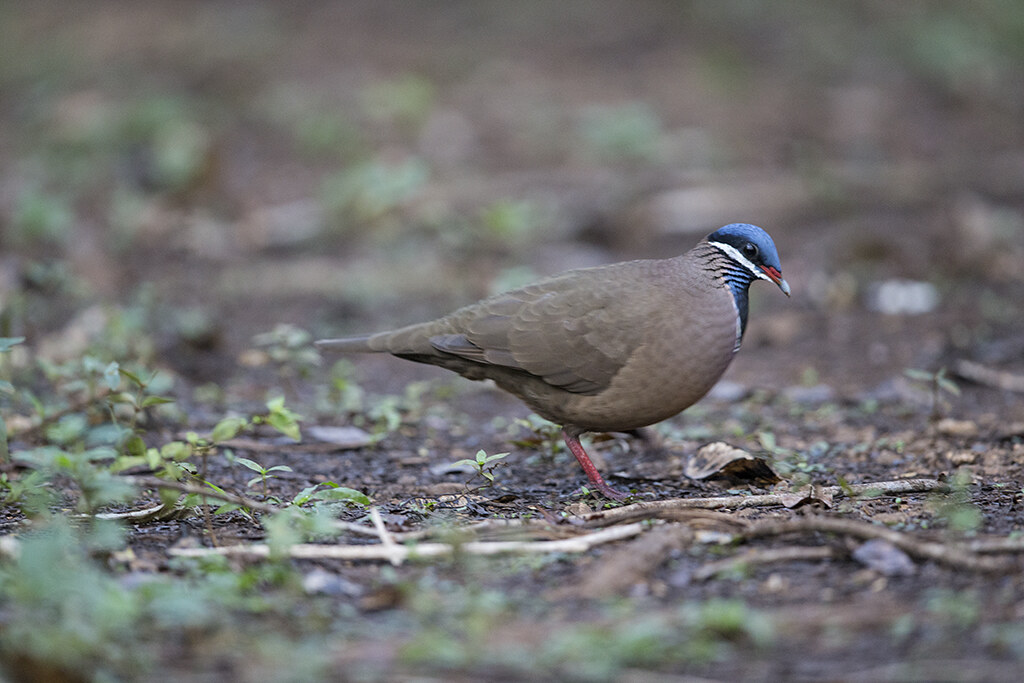
Occasionally stopping to take a bow of course!
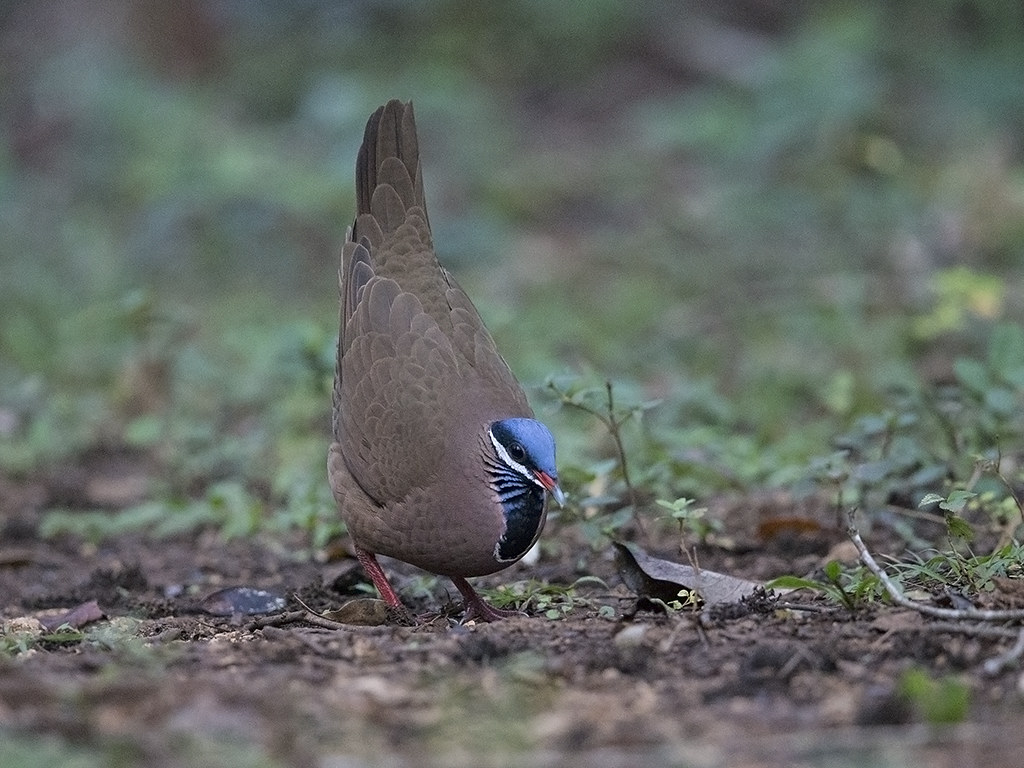
I'd managed enough conversation using various aids to indicate that Cuban Parakeet was a desired target and despite the fact Gwilliam told me they were difficult we got lucky and found a whole tree full of them just down the road from the doves.
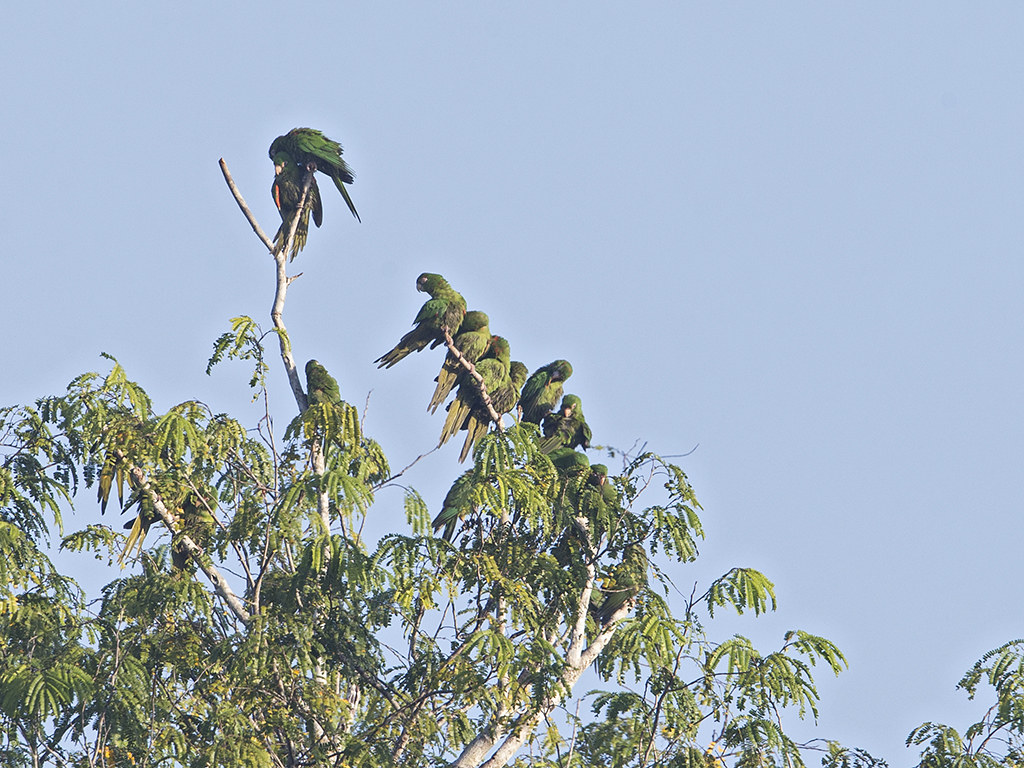
They all flew off but a couple returned very briefly to a much closer tree.
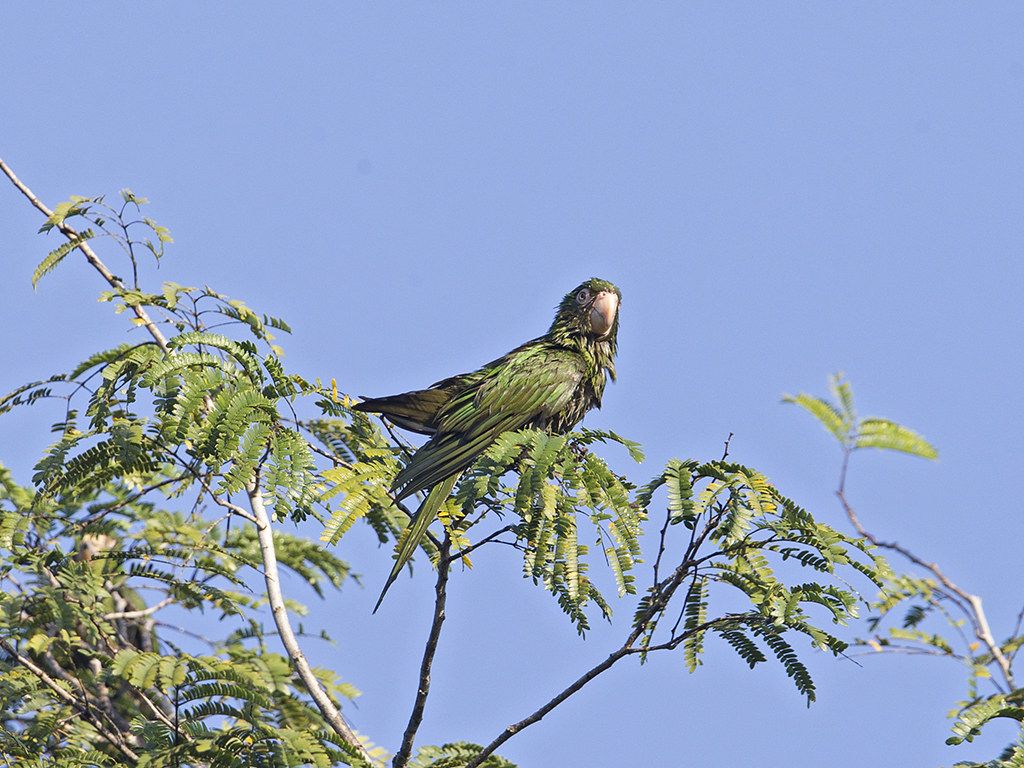
So decent views were had.
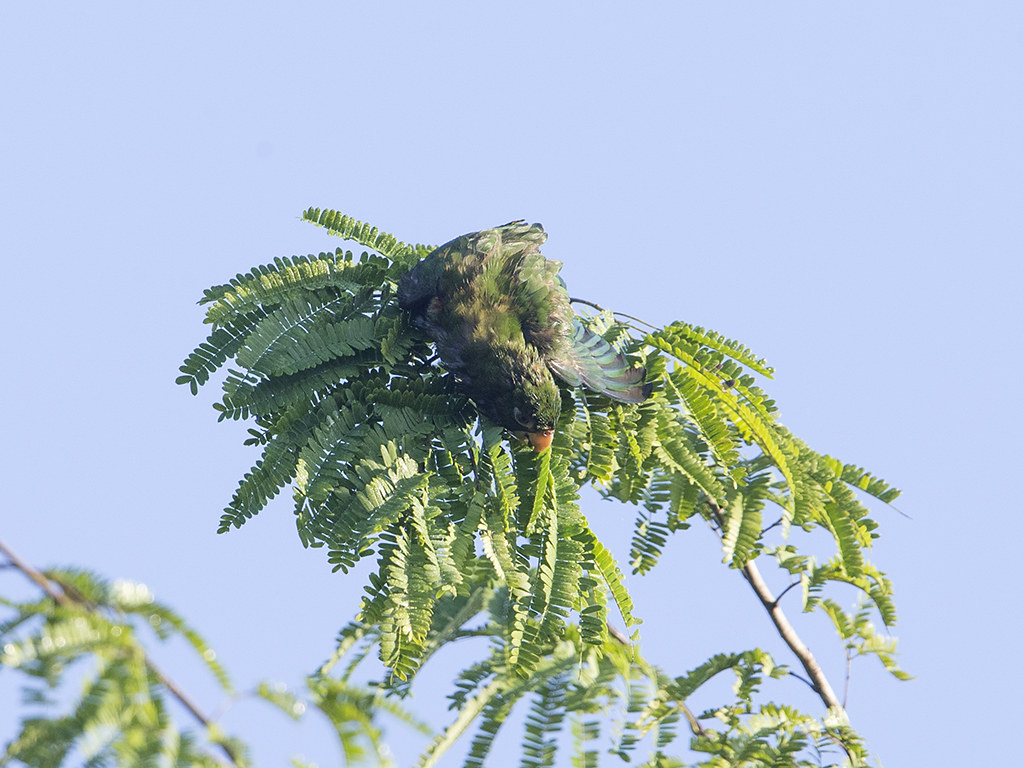
A decent start to the day!
We then headed back north stopping first at Punta Perediz where there is a very popular dive and snorkelling centre. I think you pay a fee to enter for which you get to use their sun beds and get a meal and drinks included in the price. We were very early and the first of the swimmers was yet to appear and they were happy for us to enter free of charge to check out a big tree in the middle of their ground to seek out the endemic Red-shouldered Blackbirds. There were quite a few in the tree, two flew out and you could clearly see the red shoulder patches when in flight, those that remained were apparently juveniles and their distinctive flashes have yet to appear.
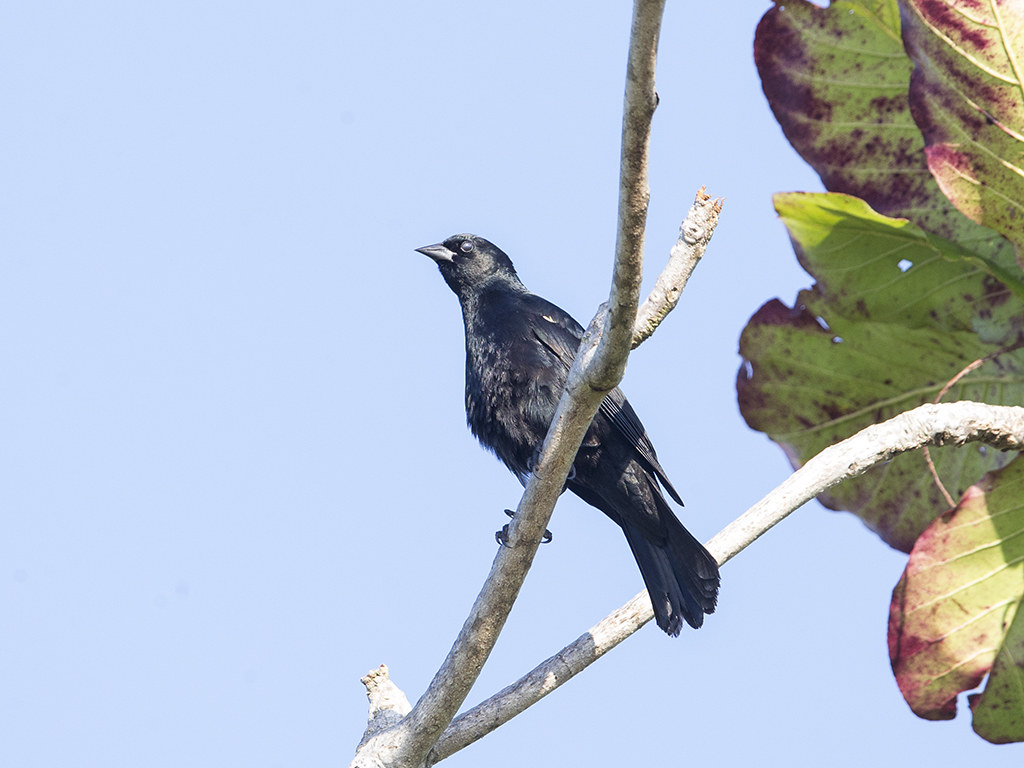
My photo barely shows anything at all!
Next it was on to another dive spot popular with day trippers. The Cueva de los Peces is an inland deep lagoon surrounded by woods.
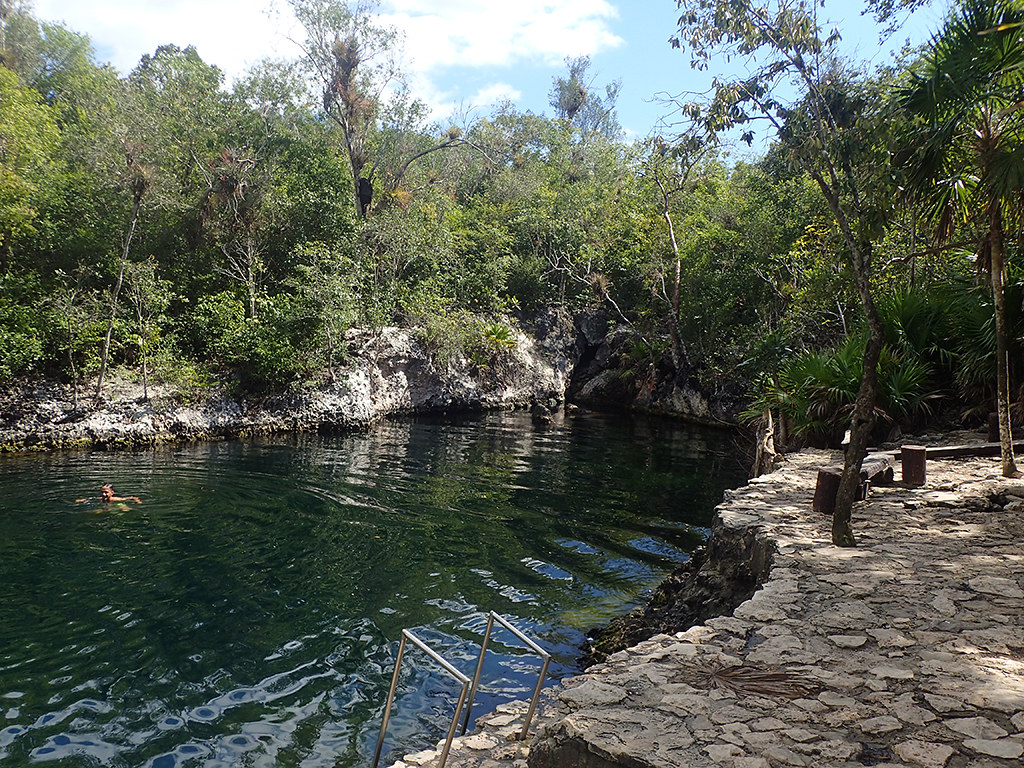
It's only about 50 metres from the road and the seashore but it has a restaurant and loos and get's very popular after 10am when the tour buses start dropping in.
We were there just before !
Using a bird caller, Gwilliam had an almost instant response from his target , the endemic Trogan.
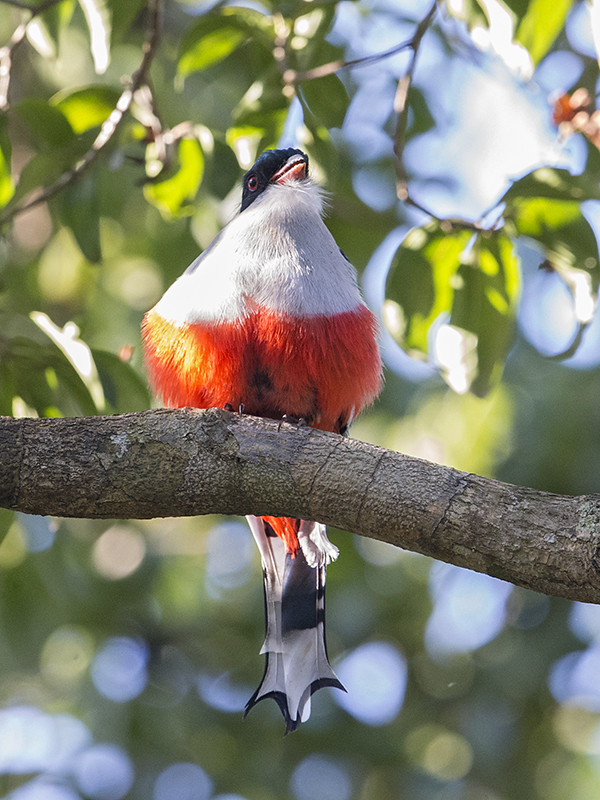
Puffed up, I would guess in response to a possible interloper, he made a difficult subject due to the lighting and surrounding trees.
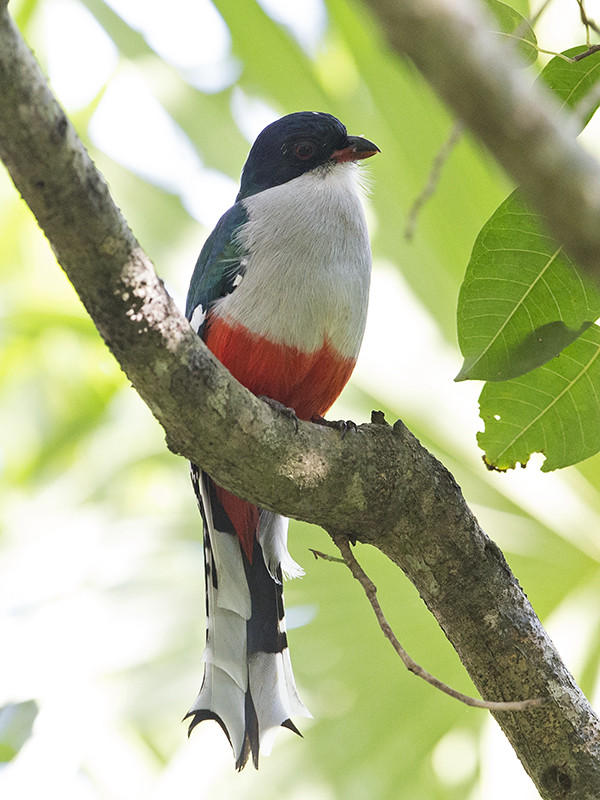
A stunning looker and Cuba's national bird, well has the colours of the flag so has to be!
From behind the blues take on a green appearance depending on the light.
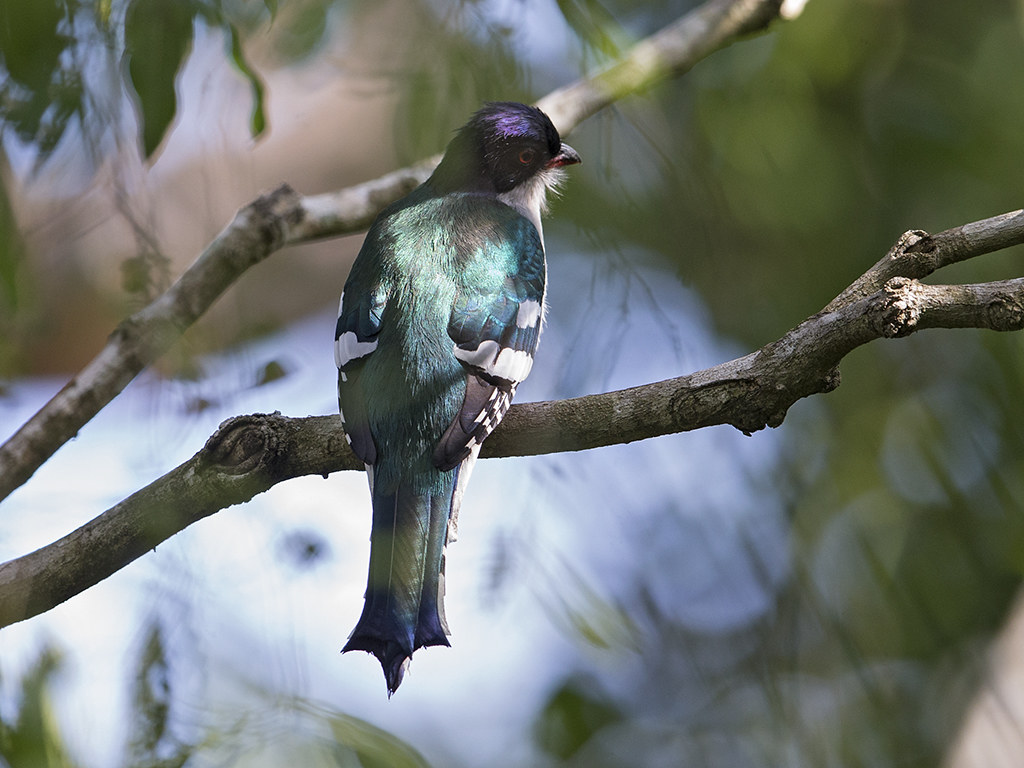
During a of couple attempts to lure the bird back in to a better position to photograph, another endemic, the Cuban GreenWoodpecker, flew through the woods.
I knew that it was a lost cause trying to capture a really good Trogan image so I requested an attempt at calling the 'pecker.
Another instantaneous result with not one but two of them!

They proved to be just as challenging in low light and shade, the camera allows you to enhance it greatly.
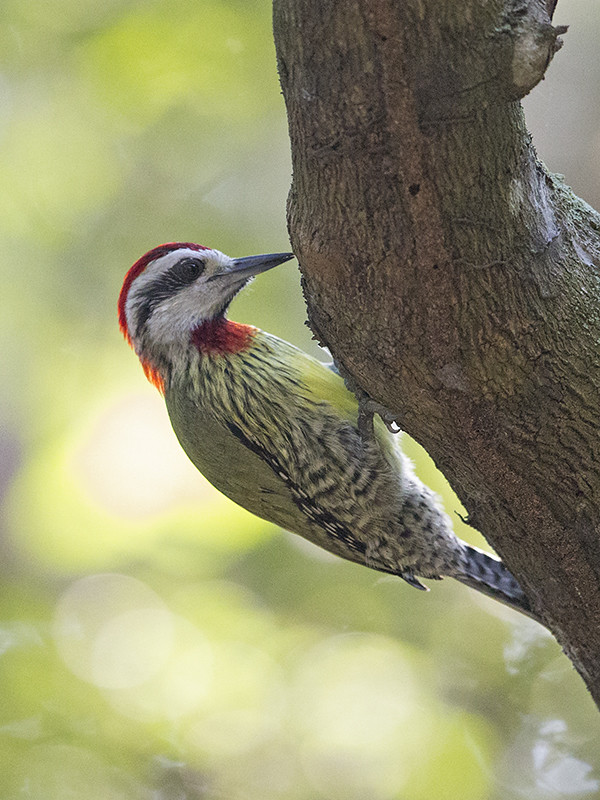
but with a bit of luck and a higher frame per second rate you are in with a chance of capturing an image where the motion blur isn't apparent.
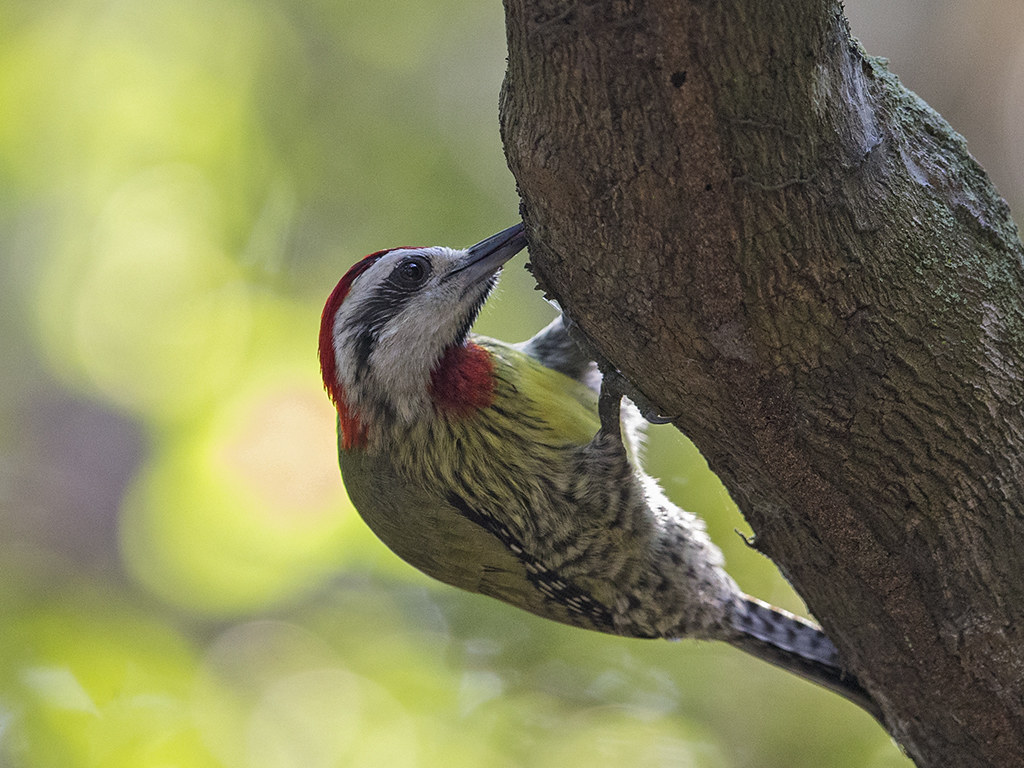
These weren't the only species around in the woods either. We had excellent views of a male American Redstart

A Black and White Warbler

and my only Stripe-headed Tanager for the whole trip.
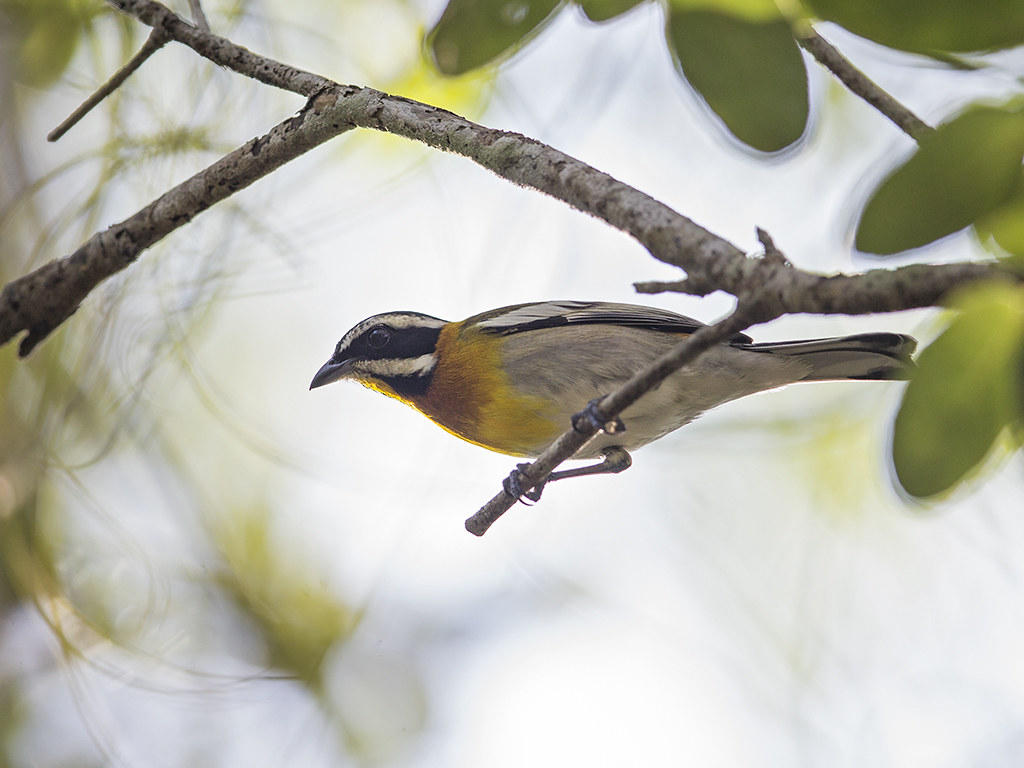
As the trippers were getting bigger in number we moved on and headed towards Sopillar, again! It was somewhere I felt comfortable wandering myself and really I wanted to go in to the National Park but Mario had dissuaded me so Sopillar it was. A favourite with all the guides it seems.
We went in from a different direction, this time from the south and on a tarmac'd road which was much better than the entrance to the north which I'd been using.
First tip and lesson learnt!
We headed in to a well wooded area taking the car as far as it was safe, or at least seemed safe, to do so, then got out on foot where we soon bumped in to another guide with his client. The client was very exited and showed us a shot of the Fernandina's Flicker he had taken. It was a distant shot taken with a small lens and he was extremely chuffed to have got it. The Flicker, another endemic, was on my target list too and I'd been studying the pictures in my guide book. The one in his picture I could have sworn had some red showing on it's head which would have made it a West Indian Woodpecker but I am a birding numpty so who was I to say anything.
I later discovered Gwilliam was also of the opinion it wasn't a Flicker either.
It poses the question of what the client might have thought when he eventually saw his shot on a big screen. Maybe to this day he hasn't realised and is happy in his record. Does it matter really ?
I leave you with your own thoughts!
Anyway, we came to the edge of the woods and infront of us a fairly heavily flooded field.
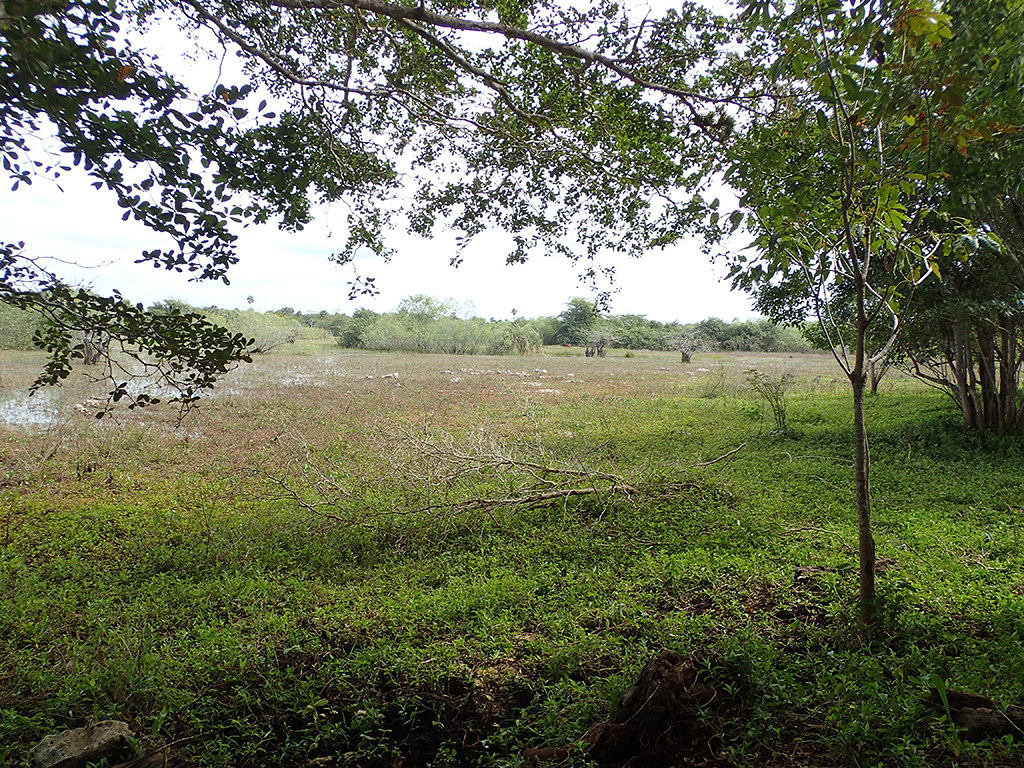
"Do you want to see if we can find a Cuban Screech Owl?" I was asked.
"You bet!" was my reply .
"Follow me then." was the instruction as he rolled up his trousers to reveal he was about to head off in to the swampy field with his trainers and socks on!
Wearing shorts and sandals, I just discarded the sandals and followed in bare feet.
Holding a big lens and camera in one hand and using my tripod as a walking stick to maintain balance I was able to keep up despite being up to my knees in water and my feet dragging through weed and roots on occasion. I even managed to sneak up on a pair of Jacanas using a tree for cover.
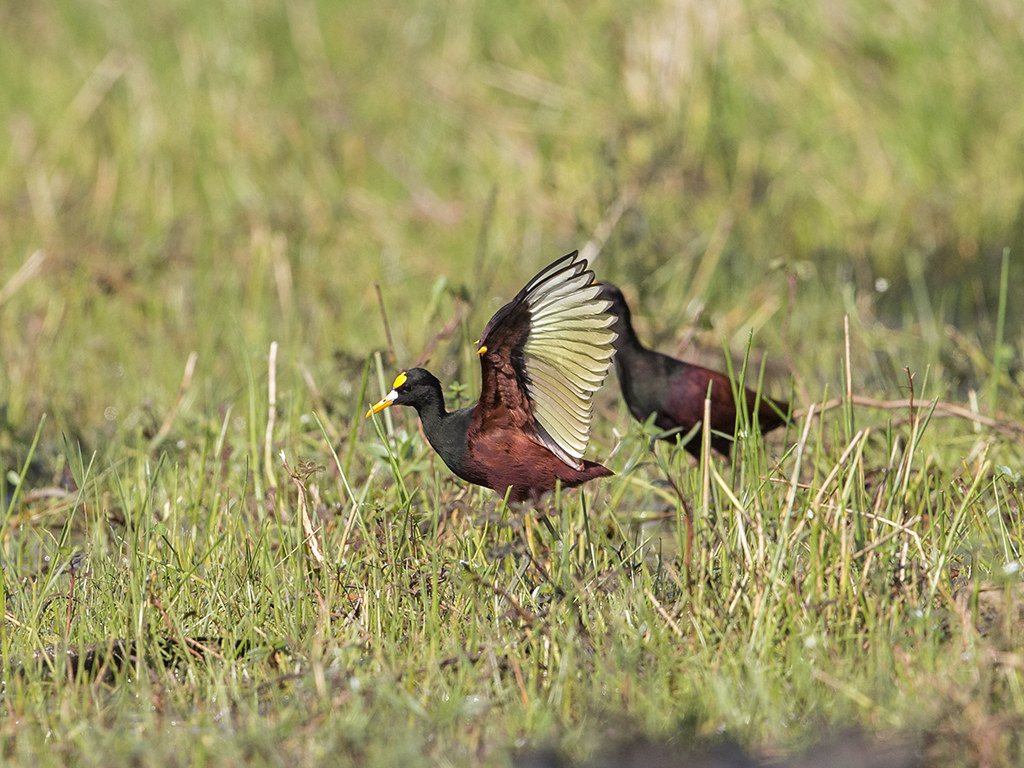
After a brief search Gwilliam found the tree that hopefully was where the Screech Owl might be although there was no guarantee. He told me to get ready as he would knock on the trunk a couple of times.
Sure enough, there at the door to see who was there, our target bird.
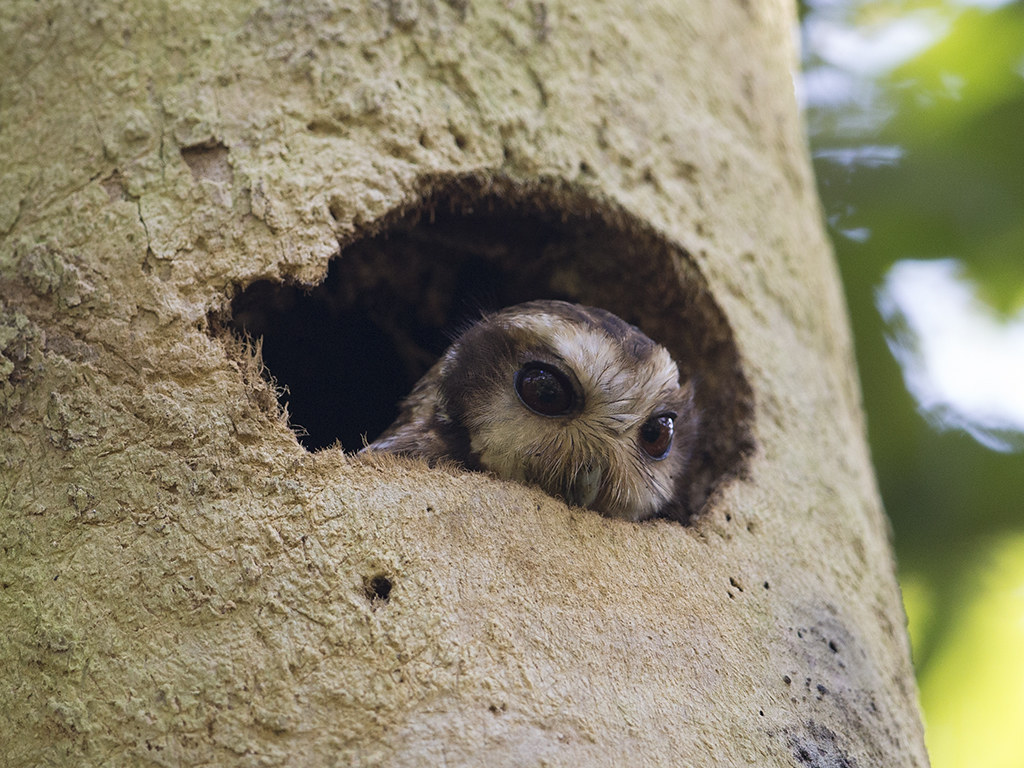
A quick change of position to try for a better shot and we were off to leave it in peace.
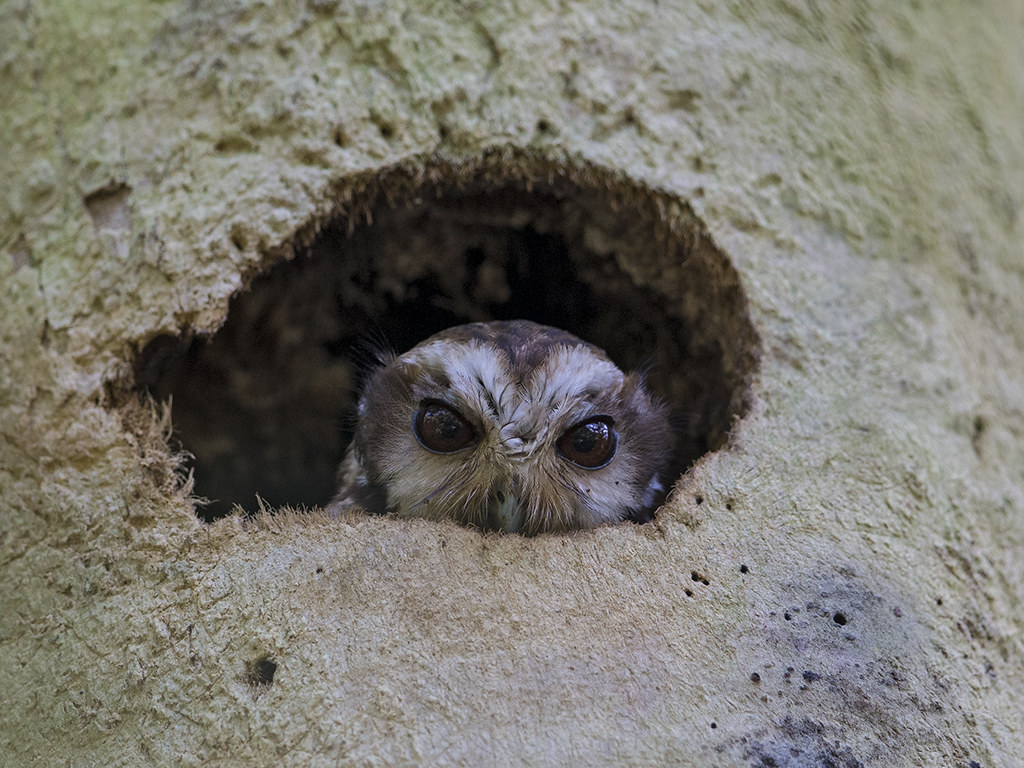
I don't think there will be too many visitors disturbing his sleep.
Anyway, having crossed back over the field we took the car to a previously visited spot by myself. This time we walked some distance out in to another field heading towards some Palm trees out in the middle. We too were in search of the Flicker and from a distance we spied a bird clinging to a tree trunk. Paying more attention to trying to avoid being seen I failed to notice that the ground suddenly changed to pretty wet. Only for a small patch but enough to disappear up to my ankles in mud. All that effort to protect my sandals for nothing! Still we got in to position to view the bird but to my disappointment it was also a West Indian Woodpecker. I wondered if we had been tipped off by the other guide but if so this cast an even bigger doubt on his client's Flicker shot!
Anyway, we walked back towards a patch of lightly wooded field which I had explored the previous evening and, using a caller, we soon had a response. The Flicker flew past us in the woods!
The views were brief but it certainly looked different to a West Indian. Progressing as quietly as possible we followed it's flight path until we found it up a tree offering stunning views.
This was were I made a big mistake and my biggest regret of the holiday, from a photographic perspective anyway. The light wasn't good so instead of just taking some immediate shots I decided to use the tripod I was carrying but by the time I was in position the Flicker had moved. I managed 4 quick shots, all very similar, all revealing a decent image of a headless Fernandina's Flicker before it took off again not to be relocated.
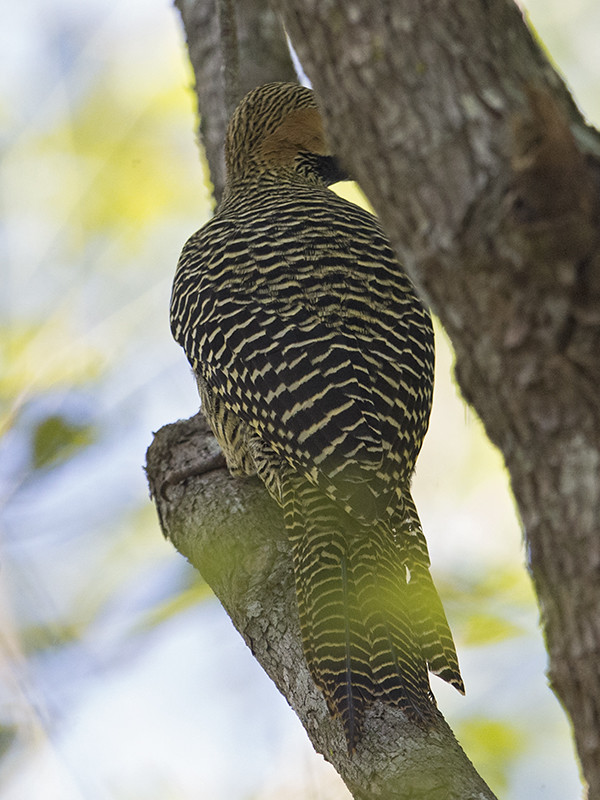
Another endemic, and together with the Owl's head I guess I almost had a complete bird photo.
I went in search many times after but all to no avail. The caller certainly gives a big advantage when it comes to finding a bird in the first place. Guides use them widely and I guess if they are used in moderation and at appropriate times it's OK.
Anyway, my tour came to an end at 1.00pm. Gwilliam had proven to be a good decision, an excellent guide and $35 very well invested. I rounded it off to $40 and he was happy enough it seemed.
So was I.
Seven endemics added to the two I already had gave me 9 out of the possible 21!
T.B.C.
No comments:
Post a Comment